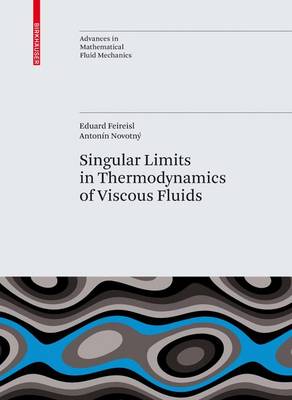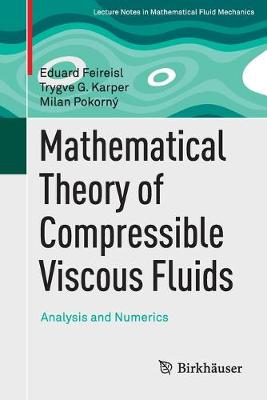Advances in Mathematical Fluid Mechanics
2 total works
Singular Limits in Thermodynamics of Viscous Fluids
by Eduard Feireisl and A. Novotny
Many interesting problems in mathematical fluid dynamics involve the behavior of solutions of nonlinear systems of partial differential equations as certain parameters vanish or become infinite. Frequently the limiting solution, provided the limit exists, satisfies a qualitatively different system of differential equations. This book is designed as an introduction to the problems involving singular limits based on the concept of weak or variational solutions. The primitive system consists of a complete system of partial differential equations describing the time evolution of the three basic state variables: the density, the velocity, and the absolute temperature associated to a fluid, which is supposed to be compressible, viscous, and heat conducting. It can be represented by the Navier-Stokes-Fourier-system that combines Newton's rheological law for the viscous stress and Fourier's law of heat conduction for the internal energy flux.
As a summary, this book studies singular limits of weak solutions to the system governing the flow of thermally conducting compressible viscous fluids.
Mathematical Theory of Compressible Viscous Fluids
by Eduard Feireisl, Trygve G. Karper, and Milan Pokorny
This book offers an essential introduction to the mathematical theory of compressible viscous fluids. The main goal is to present analytical methods from the perspective of their numerical applications. Accordingly, we introduce the principal theoretical tools needed to handle well-posedness of the underlying Navier-Stokes system, study the problems of sequential stability, and, lastly, construct solutions by means of an implicit numerical scheme. Offering a unique contribution - by exploring in detail the "synergy" of analytical and numerical methods - the book offers a valuable resource for graduate students in mathematics and researchers working in mathematical fluid mechanics.
Mathematical fluid mechanics concerns problems that are closely connected to real-world applications and is also an important part of the theory of partial differential equations and numerical analysis in general. This book highlights the fact that numerical and mathematical analysis are not two separate fields of mathematics. It will help graduate students and researchers to not only better understand problems in mathematical compressible fluid mechanics but also to learn something from the field of mathematical and numerical analysis and to see the connections between the two worlds. Potential readers should possess a good command of the basic tools of functional analysis and partial differential equations including the function spaces of Sobolev type.

